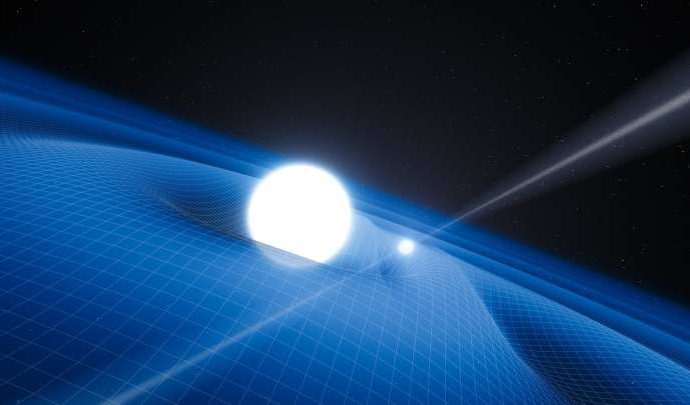Pulsars are incredible heavenly bodies.
Source: IFL Science
They are neutron stars just 20 kilometers (12 miles) in diameter that pack more mass than our Sun. Their defining characteristic though is the beam of radio waves that they emit along their magnetic axis, which makes them appear to pulsate as they spin.
The pulsation of pulsars has been used to test predictions of general relativity in the past, but a particular system, PSR J1906+0746, has given researchers a new testing ground. This system sports not one but two pulsars orbiting each other every four hours – and these characteristics are key to seeing the relativistic effects.
The theory of general relativity explains the laws of gravity and its relation to other forces, describing gravity as a geometric property of space and time. Einstein said that anything with mass warps space-time, and that distortion, or warp, is what we see as gravity. In this system, the two objects are so dense and so close to each other, that the geometry of the system changes over time. The direction of the magnetic axis, where the pulsation comes from, is said to experience precession, a change in orientation of the axis of a rotating body, over time.
As reported in the journal Science, researchers have been tracking the pair for years. The team looked at data between July 2005 and June 2018 and discovered that the changes are already happening. Back in 2005 two pulses per rotation were visible. Over time, one of them became consistently weaker, disappearing completely in 2016.
The team was able to measure the rate of the precession with only 5 percent of uncertainty, much higher than previous examples of binary pulsar systems. The value obtained in this study agrees with the prediction of Einstein’s theory.
“Pulsars can provide tests of gravity that cannot be done in any other way,” co-author Ingrid Stairs from the University of British Columbia in Vancouver, said in a statement. “This is one more beautiful example of such a test.”
The team’s 14-year-long study is not just a look at
the past but also at the future. The second pulse is currently still
visible, but it won’t be forever. Researchers expect it to disappear
from the line of sight around 2028. It will be showing up again between
2070 and 2090. The other beam should also reappear in a similar
timeframe between 2085 and 2105.
The data collected was also used by the team to look at the physical properties of pulsars. Neutron stars are some of the most extreme objects but they are still poorly understood. The research provides some important observations of the radio emissions just above the magnetic poles of the pulsar.
“PSR J1906+0746 is a unique laboratory in which we can simultaneously constrain the radio pulsar emission physics and test Einstein’s general theory of relativity,” said Gregory Desvignes from the Max Planck Institute for Radio Astronomy (MPIfR) in Bonn, the first author of the study.
Einstein’s theory of general relativity passes yet another test.

































Leave a Comment
You must be logged in to post a comment.